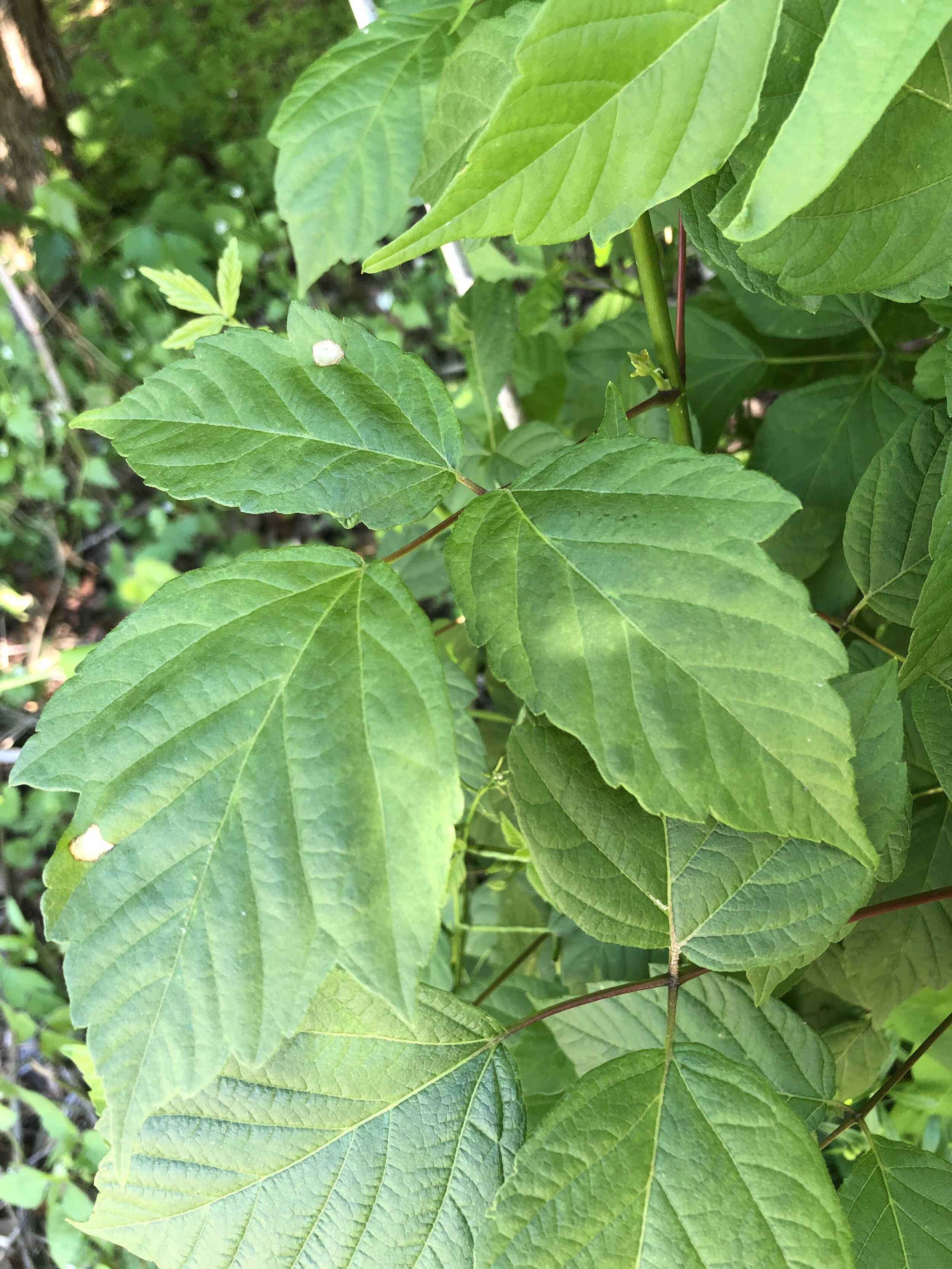Is This Poison Ivy?
One native Indiana plant can often be thought of as a pest: poison ivy. Most everyone knows the common saying of “leaves of 3, let it be,” but did you know there are some other ID characteristics that will help you identify if you really have poison ivy, or something else altogether?
Poison Ivy, Toxicodendron radicans
“Leaves of three” refers to the 3 leaflet cluster that is characteristic of this plant. The center leaflet (all three leaflets growing together is called a leaf in this case) has a slightly longer petiole, or stem, than do the two leaflets that are growing on the sides. When you are trying to determine if you’re looking at poison ivy, this is a good starting point.
Next, look at the edge of the leaflet, as well as the general overall shape. There is a pointed tip to each leaflet. The edge of the leaflets usually have some serrations, but they are intermittent and do not have the regular serration that a leaf from a Beech or Elm tree does. Many areas of the leaf edge can be smooth, being interrupted only once or twice by serrations.
If you see black marks from some kind of damage, such as an insect hole, this also can point to your plant being poison ivy. Urushiol oil is the irritant present in poison ivy, and it turns black upon exposure to air. Hence, when an insect eats part of the leaflet, the urushiol oil is exposed.
One final, and very important, ID characteristic is how the leaf grows off of the main stem. We’ve already learned that the three leaflet cluster is called a leaf. Look to the base of the petiole (stem) of this leaf and pay attention to whether the next leaf growing close to it is growing directly opposite from the leaf, or if the next leaf is growing a little ways up on the stem: alternate leaf growth. If the leaf is growing in an alternate pattern, you have poison ivy. However, if your plant is growing with an opposite leaf pattern, you have box elder.
Box Elder, Acer negundo, with opposite leaf growth
If you follow the above steps on ID, you will be successful in finding out if you have poison ivy! I’ve happily encountered plants that check off nearly all the boxes on poison ivy ID, only to finally look at the growth pattern and see that the leaves are growing opposite rather than alternate. Phew! Box elder after all! This ID point has saved me a lot of strife throughout the years as I am highly allergic to poison ivy, and try my best to stay away from it at all costs.
Let’s look at some more pictures to see if you can determine whether the plant is poison ivy or box elder.
Leaves of 3? Yes.
Longer petiole on the center leaflet? Yes.
Areas of serration, but not very regular? Yes.
Alternate leaf growth? Yes.
Alternate leaf growth from the stem, in addition to the other characteristics means this plant is poison ivy.
Leaves of 3? Yes.
Longer petiole on the center leaflet? Yes.
Areas of serration, but not very regular? Yes.
Alternate leaf growth? No.
This plant is box elder since the leaf growth was opposite rather than alternate.
Some additional points to consider about poison ivy;
Do not ever burn poison ivy to eradicate it as the urushiol oil is carried in the smoke. If you were to inhale this smoke and have a reaction, you would be in for a very unpleasant time with it in your lungs. The leaves and stem can still cause a reaction in those who are allergic, even after the leaves fall off the plant in the fall. The dead leaves and dormant stems and vines still contain urushiol oil, so care should be taken if you encounter these.
Being a native Indiana plant, poison ivy is a good food source for birds who love to eat their berries. While it may be irritating to many of us, it is an important part to our local biome.
Article submitted by Eryn Cusack





